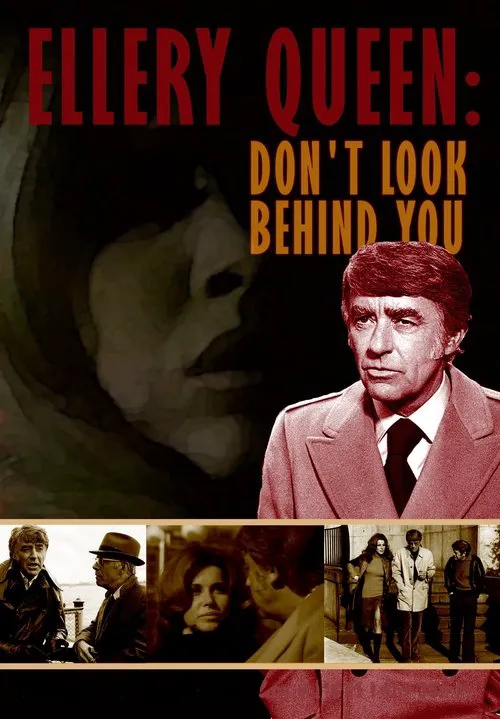Ellery Queen: Don't Look Behind You

Plot
In the thrilling murder mystery film Ellery Queen: Don't Look Behind You, Detective Ellery Queen, along with his father, Inspector Richard Queen, finds themselves entangled in a puzzling and intricate case that tests their exceptional detective skills. The story unfolds with the gruesome discovery of a series of murders where the victims all have a peculiar trait in common: their ages are meticulously decreasing, from old age to younger and younger victims. The first victim, an elderly woman, is found strangled with a blue cord. This sets off a chain of investigations, as the Queens work tirelessly to identify the killer and unravel the enigma behind these seemingly unrelated murders. However, their quest is complicated when a second victim is discovered, this time a younger adult male who also met a similar fate. But here's the twist: instead of a blue cord, the killer used a pink one for this particular murder. As more victims pile up, the pattern becomes increasingly apparent. The male victims are being strangled with blue cords, signifying that the killer has a penchant for using blue, while the female victims, on the other hand, are meeting their demise at the hands of pink cords. This dichotomy poses a fascinating puzzle for the Queens as they begin to speculate about the killer's modus operandi. While navigating this labyrinthine case, Ellery and his father come across a cryptic message left behind at one of the crime scenes. This message serves as a warning, cautioning those involved not to look behind them. However, the message takes on a double meaning as the story progresses. Is the killer using it as a warning to the detectives themselves, or is it merely a misdirection tactic to lead them astray? Ellery's analytical mind and intellect lead him to a crucial observation about the victims themselves. As he sifts through the evidence, he starts to piece together the possible connections between the murdered individuals. He discovers that all the victims share a common thread: they were participants in a psychological experiment conducted by none other than a respected psychiatrist in the town. The psychiatrist, Dr. Lawrence, seems to be the most likely suspect behind these murders. His experiment aimed to investigate human psychological behaviors by manipulating the lives and surroundings of his participants in subtle ways. Ellery begins to suspect that the psychiatrist might have taken his research to a fatal extent by orchestrating these murders. However, the psychiatrist's alibi seems airtight, further mystifying the detective. As the investigation unfolds, Ellery discovers that the blue and pink cords used by the killer correspond with a particular pattern of behavior exhibited by the participants during Dr. Lawrence's experiment. The cords symbolize the 'good' and 'bad' sides of human nature, leading the detective to ponder whether the victims met their demise at the hands of their own darker impulses. However, just as Ellery thinks he's close to solving the case, Dr. Lawrence produces a surprising twist. It turns out that Ellery himself is one of the participants from the psychological experiment, whose mind had been subtly manipulated by the psychiatrist. This information throws Ellery off guard and challenges his own perception of reality. The revelation raises several questions about the nature of truth and perception. Has Ellery been seeing things from a skewed perspective all along? Are his observations of the case merely a product of his own manipulated mind? This existential crisis is further complicated by the fact that his father, Inspector Queen, is also unaware of Ellery's involvement in Dr. Lawrence's experiment. In the thrilling climax, Ellery is left to navigate between his own perception of reality and the objective investigation. While trying to separate truth from deception, he comes face-to-face with Dr. Lawrence in an emotional confrontation. This confrontation reveals a chilling truth about the nature of human psychology and the darker, hidden aspects of human behavior. As Ellery solves the case and uncovers the identity of the killer, he is left to grapple with the unsettling realisation that his own mind had been toyed with during the experiment. The film ends with a sense of ambiguity, suggesting that even the best of detectives can become mired in the complexities of human psychology.
Reviews
Recommendations


